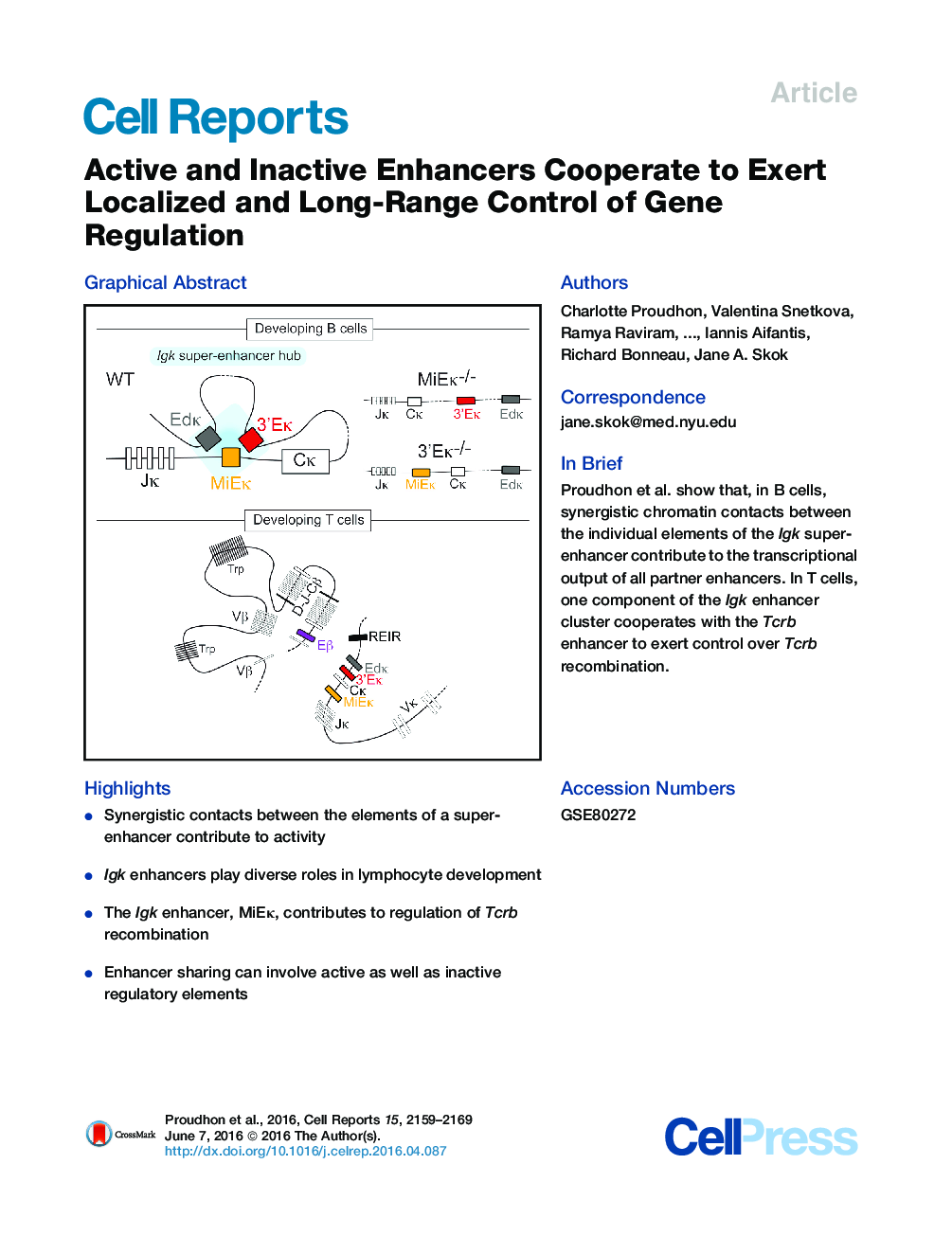| Article ID | Journal | Published Year | Pages | File Type |
|---|---|---|---|---|
| 2039194 | Cell Reports | 2016 | 11 Pages |
•Synergistic contacts between the elements of a super-enhancer contribute to activity•Igk enhancers play diverse roles in lymphocyte development•The Igk enhancer, MiEκ, contributes to regulation of Tcrb recombination•Enhancer sharing can involve active as well as inactive regulatory elements
SummaryV(D)J recombination relies on the presence of proximal enhancers that activate the antigen receptor (AgR) loci in a lineage- and stage-specific manner. Unexpectedly, we find that both active and inactive AgR enhancers cooperate to disseminate their effects in a localized and long-range manner. Here, we demonstrate the importance of short-range contacts between active enhancers that constitute an Igk super-enhancer in B cells. Deletion of one element reduces the interaction frequency between other enhancers in the hub, which compromises the transcriptional output of each component. Furthermore, we establish that, in T cells, long-range contact and cooperation between the inactive Igk enhancer MiEκ and the active Tcrb enhancer Eβ alters enrichment of CBFβ binding in a manner that impacts Tcrb recombination. These findings underline the complexities of enhancer regulation and point to a role for localized and long-range enhancer-sharing between active and inactive elements in lineage- and stage-specific control.
Graphical AbstractFigure optionsDownload full-size imageDownload as PowerPoint slide
